This is very clever. I believe you have tried this and it works, but I am completely puzzled.
...
I would appreciate any help from you (or anyone) about this.
I did not see this thread earlier, but it looks like a very creative use of the driver.
It works because the 7135 is a linear current regulator (in other words it is like a fancy variable resistor in the circuit). Because it is a linear regulator, the current everywhere in the circuit is the same, just as if it were a simple resistor.
In the first circuit then, all three P7's see whatever current the 7135 is set to, for example 2.8 A.
Now let's look at the voltages. When fully charged, three Li-ions in series produce about 12 V. On the supply side of the 7135 we have two P7's in series. Each of these will drop their Vf, which for the sake of example we might assume to be 3.5 V. Therefore the voltage seen on the input side of the 7135 will be 12 - 2 x 3.5 = 5 V. We therefore are within the allowable input range of not more than 6.0 V. Lastly, the 5 V input provides enough margin to drive the P7 on the output, assuming the same Vf of 3.5 V.
Out of curiosity, we can take the worst case when the battery is discharged and the P7's happen to have a higher Vf of 3.7 V. Close to discharge the battery will have a voltage nearer to 9 V than 12 V. From this we subtract 2 x 3.7 V giving 1.6 V. Clearly 1.6 V on the input to the 7135 is nowhere near enough to drive the output LED, so all the P7's will have shut off long before the battery gets this low.
As a result, the setup will not be able to extract all the charge from the battery, but on the good side it will protect against over discharge and prolong the life of the cells.
The second circuit can be analyzed in a similar way, except that now two LED's have been put in parallel. The trouble here is that if the two LED's have different Vf values, the current will not be equally distributed between them. Worse, if one gets hotter than the other the imbalance will tip further in the unequal direction.
It is not typically advised to put LED's in parallel because of this problem of current balancing. It may work but it's not a robust arrangement.
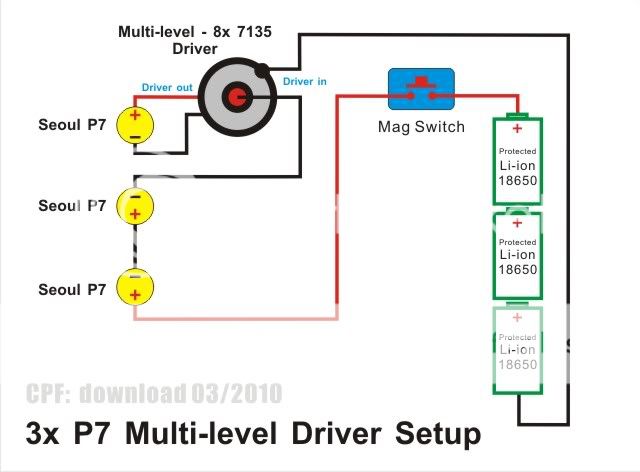
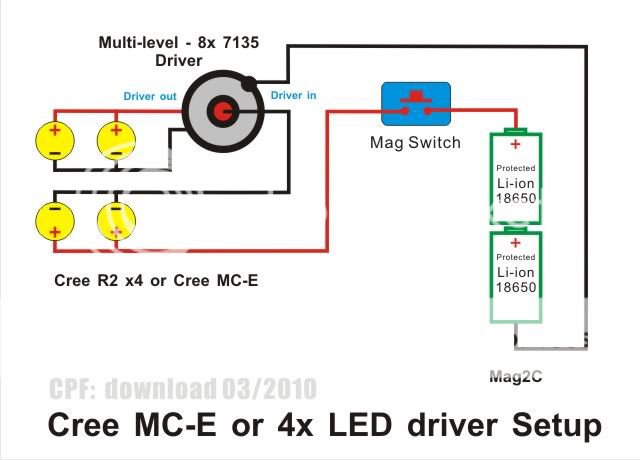
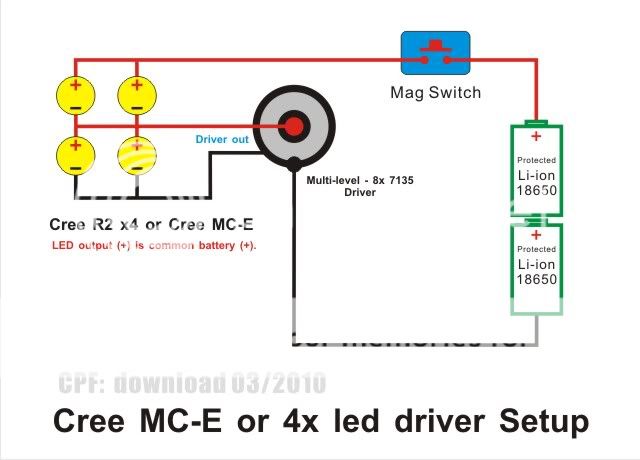
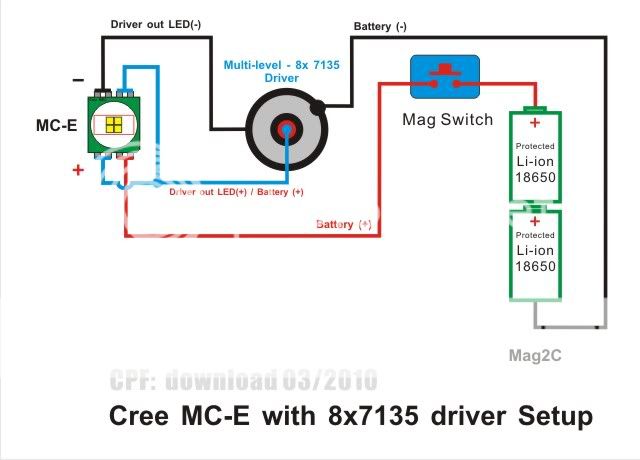
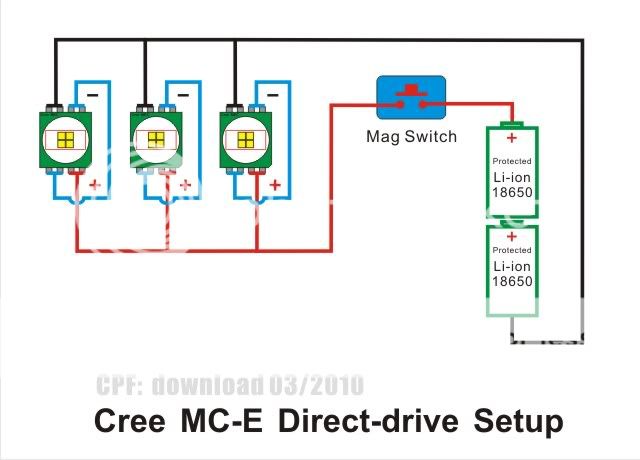







 I'm also thinking of using a D2DIM with this.
I'm also thinking of using a D2DIM with this.
 , really sorry, corrected the diagram uploaded.
, really sorry, corrected the diagram uploaded.